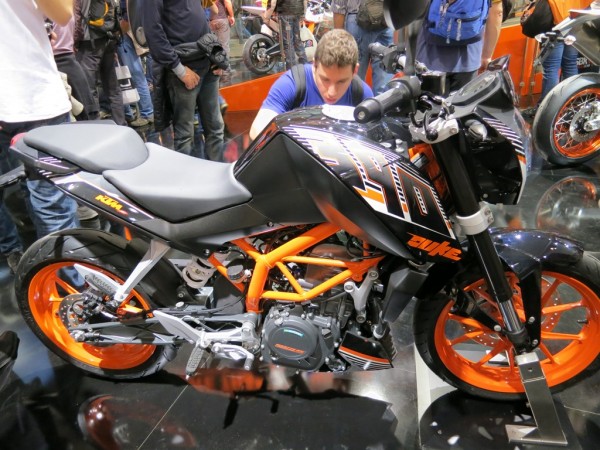Motorcycle production boom in India
23/09/2014
For a long time India's motorcycle manufacturers have been producing mainly for the domestic market. Now they are on the way to becoming global players.
The Indian motorcycle market is one of the most important in the world: In 2013, the production volume totaled over 15.8 M two-wheelers with engine capacities exceeding 50 cc. This represents more than a quarter of global production. Of these nearly 16 M two-wheelers, around 9 M units were sold domestically, whereas more than 6 M were exported.Motorcycle insiders are familiar with the names of Indian manufacturers like Bajaj, Hero or TVS. Until about five years ago, their main activity was to produce for the domestic market. Today, the activities of motorcycle manufacturers in India are rapidly changing. Two main trends can be observed: Indian manufacturers are going global and motorcycle producers headquartered in the US, Japan, and Europe are starting to set up production facilities on the subcontinent.A good example for the intensification of activities abroad is provided by the Indian manufacturer Bajaj. After Bajaj acquired a 48% share of KTM in Austria and thus gained access to KTM’s expertise, it was a clear step forward to take up manufacturing medium-size motorbikes for the global market in India. Even such a strong brand as KTM has no problem in selling Indian-made bikes in all its global markets. Bajaj-KTM currently produces between 25,000 and 35,000 motorbikes per year in the range of 125 to 390 cc under the Duke brand in India.Of the motorcycle producers headquartered outside India, the Japanese manufacturers have been among the most active in India in recent years. Honda, Yamaha and Suzuki have all opened subsidiaries or participated in joint ventures in the country. These companies not only assemble or produce two-wheelers for the Indian market. For example, Honda also manufactures a 1,000 cc motorbike for export sales.The manufacturing process in India meets high quality standards. The workforce is also highly skilled. Hence, it is no longer a problem to manufacture in India, even for very demanding western markets with high technical standards.Also BMW is looking to TVS to provide Indian production support. For BMW this is an opportunity to access low-cost production capacity. For TVS, the possible technology transfer is very attractive. The two companies intend to cooperate in the production of motorcycles between 250 and 500 cc for the Indian market under the TVS brand and for the export market under the BMW brand.Other companies that see opportunities in India are Ducati (start of production in India in 2011), Triumph (2014) and Harley Davidson (2011). All three started with CKD (completely knocked down) production. Yet Triumph and Harley will move on to full local production and assembly to benefit more from the low cost level. For the world famous manufacturer Harley Davidson, this is the first time it has ventured to produce its bikes outside the USA, which further underlines the importance of India as a motorcycle production location and the trust foreign manufacturers place in Indian production capabilities.Last but not least, even suppliers to the motorcycle industry are already present in India. For instance, the well-known Italian brake manufacturer Brembo produces brakes under the Bybrem brand in a 100% Indian subsidiary.The times when motorbikes "Made in India" suffered from a low quality reputation are obviously over. Today, the country has established itself as one of the prime locations for motorcycle production.